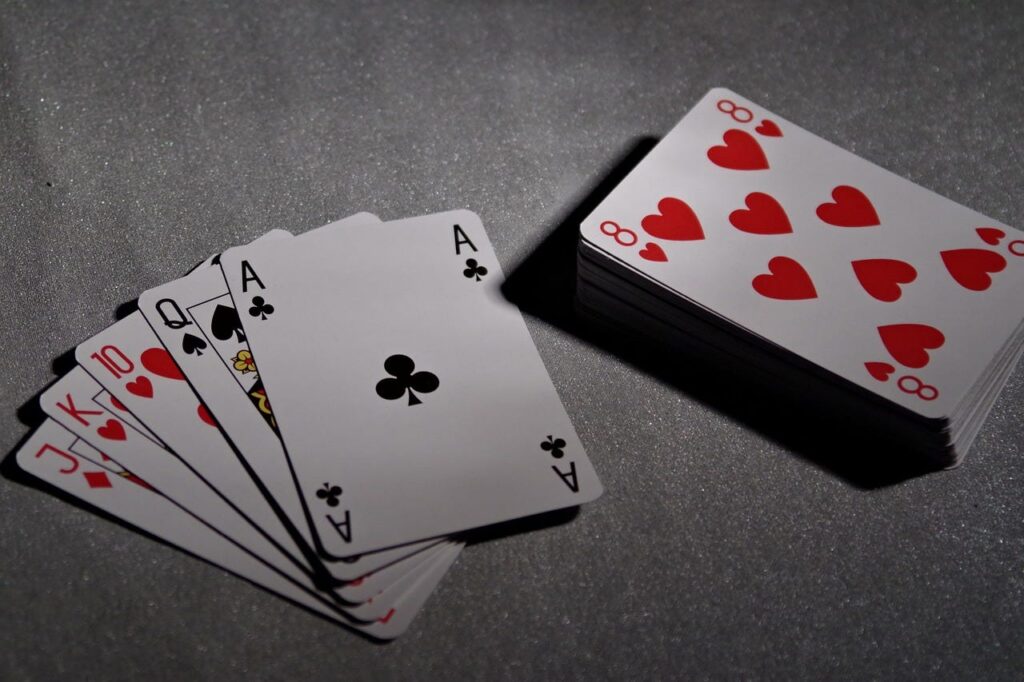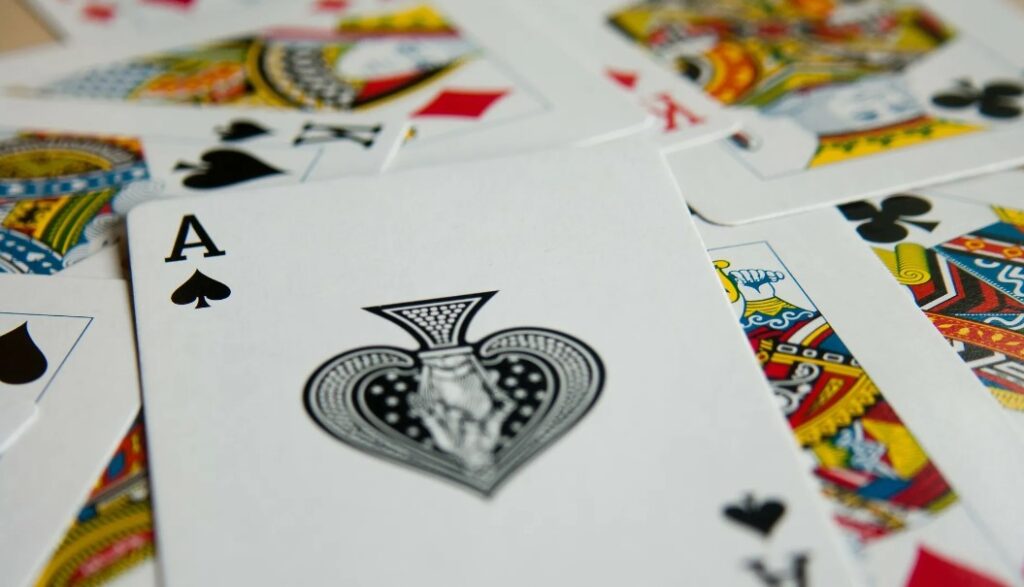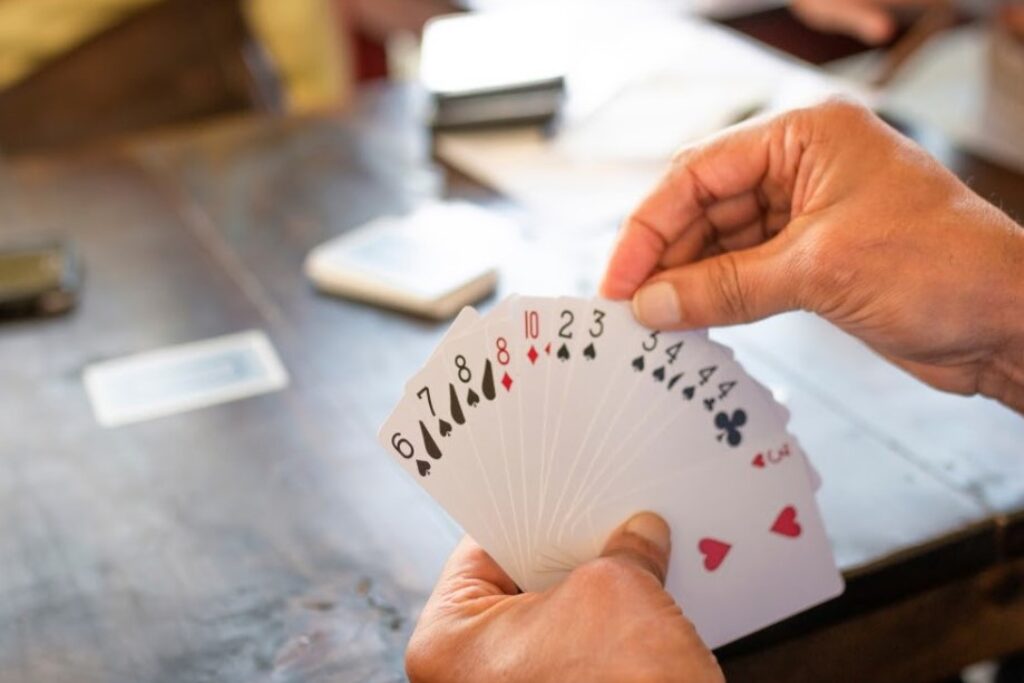
Have you ever sat down to play a game of rummy, only to be left scratching your head over the intricacies of forming sequences? You’re not alone. Understanding the rules and strategies involved in creating pure and impure sequences is key to mastering this classic card game.
This article will serve as your comprehensive guide, breaking down the complexities and nuances of these two different types of sequences in a clear, concise manner that even novices can grasp.
| TL ─ DR
In Rummy, forming a ‘Pure Sequence’ involves lining up three or more cards from the same suit in numerical order without using any jokers or wildcards. It’s a crucial skill that not only contributes to a valid declaration but also serves as a buffer against penalty points. An ‘Impure Sequence’ in Rummy, on the other hand, allows the use of at least one joker or wildcard to replace any card in the sequence, offering flexibility and adaptability during play. However, the key is to recognize when to form an impure sequence without wasting valuable wildcards unnecessarily. |
Table of Contents
Basics of Creating Sequences in Card Games

Source: thesprucecrafts.com
Understanding the essentials of crafting sequences in card games is key, as it’s not only about knowing the difference between low and high-point cards but also mastering how to effectively use picture cards and jokers.
Sequence importance cannot be overstated, especially when playing rummy. You need to understand which combinations can give you a winning edge. Picture cards, for instance, allow you to create powerful sequences with values 11-13 (for Jack, Queen, and King respectively). On the other hand, using low point cards (2-5) smartly can help maintain your overall points lower should you lose.
When selecting your cards from the deck or discard pile during each turn, your keenness on card selection plays a pivotal role in forming effective sequences. Consider both what will aid in completing your existing sequence plans and what might contribute towards potential new ones. Don’t forget about those sneaky Jokers – they could act as wildcards and stand in for any missing card in a sequence; their versatility can indeed provide a significant advantage when used strategically!
Next, comes arrangement techniques. Here lies an opportunity to arrange your cards so that they form valid pure or impure sequences quickly. But beware; this isn’t always smooth sailing – there are numerous sequence challenges. For example, making sure you have at least one pure sequence before moving on to creating sets or impure sequences requires careful planning. And remember: keep track of discarded cards by opponents too; these hints may guide your decisions throughout the game progression, keeping you ahead of the curve!
As we delve deeper into the rummy game rules, remember this: understanding how to craft effective sequences truly lays the foundation stones for becoming a seasoned player!
Understanding the Concept of Pure Sequences in Rummy

Source: mpl.live
Let’s delve into the nitty-gritty of mastering the art of forming consecutive cards of the same suit, a crucial skill in this captivating card game.
Pure sequences are fundamental to winning strategies in rummy. They require you to line up three or more cards from the same suit in numerical order without any wildcards or jokers. This requires an advanced understanding and application of sequence formation principles, which can be quite challenging but rewarding once mastered.
The benefits of creating pure sequences go beyond just fulfilling one part of a valid declaration – they also serve as a buffer against penalty points should your opponent declare before you do. If you find yourself stuck with high-value cards toward the end of the game, having already formed at least one pure sequence can significantly reduce your potential losses. Despite these clear advantages, there are numerous challenges associated with crafting pure sequences, such as requiring specific cards and not being able to utilize jokers for flexibility.
Mastering pure sequences, therefore, involves strategic discarding and drawing decisions based on both what is in your hand and what you predict is in your opponents’. It’s about managing risks while maximizing opportunities by effectively using joker cards elsewhere and keeping tabs on discarded ones that could potentially complete your sequence. As your skills advance, so will your ability to handle different sequencing scenarios—possibly even transforming previously seen obstacles into tools for victory! Remember: In rummy, practice makes perfect; keep playing and refining your strategy.
Key TakeawayMastering pure sequences in rummy is not just about strategy but also about turning hindrances into opportunities, paving the path for an unpredictable yet thrilling victory. |
Exploring the Nature of Impure Sequences in Rummy

Source: medium.com
Now, you’re ready to dive into the world of impure sequences and discover how they can add a dynamic twist to your gameplay strategy.
Unlike pure sequences that strictly require consecutive cards from the same suit, impure sequence benefits lie in rummy’s flexible rules, allowing for more creativity and adaptability during play.
You might be wondering ─ How is an impure sequence different? Essentially, an impure sequence includes at least one joker or wildcard replacing any card in the sequence.
For instance, if you have 5 and 7 of spades but lack the 6 of spades, you can use a wildcard or joker as a substitute.
While forming impure sequences offers flexibility, it also comes with its own set of challenges.
The key lies in identifying when to prioritize creating an impure sequence over a pure one based on your hand’s composition.
One major challenge encountered during sequence formation challenges involves effectively utilizing wildcards while ensuring to use them wisely – especially since these valuable assets could potentially complete other sets or sequences.
Remember, rummy is all about adapting strategies according to your current hand and what you anticipate from your opponent’s moves.
Hence, understanding both types of sequences becomes crucial for mastering this game!
Remember that an effective player knows when to form an impure sequence by utilizing wildcards effectively.
If done right, this tactic can leave opponents surprised and give you an unexpected edge!
So go ahead and embrace the unpredictability brought upon by incorporating impure strategies into your game plan!
It’ll not only make your gameplay versatile but also keep foes guessing about your next move.
This is the beauty of Rummy – it provides you with ample opportunities to outsmart your opponents if you know how to play your cards right!
Comparing Pure and Impure Sequences ─ Key Differences

Source: gqindia.com
As you master the art of playing cards in rummy, there comes a time when you need to weigh the differences between clean runs and those that have been spiced up with wildcards or jokers. In this context, understanding sequence significance can make all the difference.
A pure sequence is integral to declaring a valid hand in rummy; it’s your ticket to victory! Remember how these sequences are made up of three or more consecutive cards from the same suit without any substitution? That’s what adds value to the game; your ability to create such an ordered group underlines your command over strategic gameplay.
Now let’s talk about impure sequences. These offer flexibility through their allowance of wildcard or joker substitutions. While they may seem less demanding due to this feature, don’t underestimate their importance in competitive play. Impure sequences provide a way out if you’re stuck with incompatible cards – believe me, we’ve all been there! But be cautious: relying too heavily on them could compromise your scoring potential. The key here lies in recognizing sequence variations as well as developing skillful manipulation techniques for both forms.
To help clarify further:
- Pure Sequences ─ 4-5-6 of hearts (Same suit, consecutive order)
- Impure Sequences ─ 5-J-7 of spades (Same suit but incorporates jokers/wildcards)
Balancing sequence formations effectively will take some practice, but it’s crucial for achieving sequence mastery. So pay attention to not only creating these sequences but also knowing when to use each type strategically based on the dynamics of the game at any given point.
Keep in mind that while both types hold significance, having at least one pure sequence is mandatory for winning the game. This highlights its comparative advantage and ultimately underscores its central role and overall sequence importance within Rummy’s strategy.
Strategies for Forming Effective Sequences in Rummy

Source: mpl.live
Ready to take your game to the next level? You’ve got the basics down, so let’s dive into some advanced strategies for forming those essential sequences.
The first key concept is sequence planning. This involves keeping track of potential sequence cards in your hand and strategically drawing or discarding cards that will help you build both pure and impure sequences faster. Remember, a good player always has a clear plan for how they’re going to form their sequences!
Along with this, start practicing pattern recognition – understanding patterns can give you an edge over opponents by helping predict which cards they might discard.
In rummy, not all discarded cards are useless; sometimes discarded cards could be treasure troves if used wisely. Hence, mastering the art of strategic discarding becomes crucial. Try to get rid of high-value cards early in the game, as these carry more points and can increase your chances of losing if left until last. Be careful not to discard any card that may prove beneficial to your opponent, though!
Lastly, it’s time to embrace two complementary skills: card counting and opponent monitoring. Card counting allows you to keep tabs on what’s been played and what remains in the deck—knowledge that can inform your strategy moving forward. On top of this, constantly monitoring your opponent’s actions helps anticipate their moves and blocks them from completing their sequences or sets before you do.
So there you have it – five dynamic strategies to amp up your rummy prowess! By incorporating sequence planning, pattern recognition, strategic discarding, card counting, and opponent monitoring into your gameplay, you’re sure to see improvement. Remember, practice makes perfect, so don’t be disheartened if these strategies take some time to master. Keep playing, keep learning, and soon you’ll be the one giving others a run for their money!
Key TakeawayMaster the art of ‘baiting’ in Rummy – a clever strategy where you discard a card to trick your opponent into discarding the card you need. |
Conclusion
Mastering the Pure vs Impure Sequence Rummy Breakdown is key to becoming a successful player.
Understanding these sequences, their differences, and strategies for forming them can significantly improve your game.
Remember, prioritizing pure sequences helps minimize penalties and increases the chances of making a valid declaration.
So keep practicing, use joker cards effectively, and track your opponent’s discards diligently!
With time, you’ll see how this detailed understanding transforms your rummy skills from good to great.
Happy gaming!







